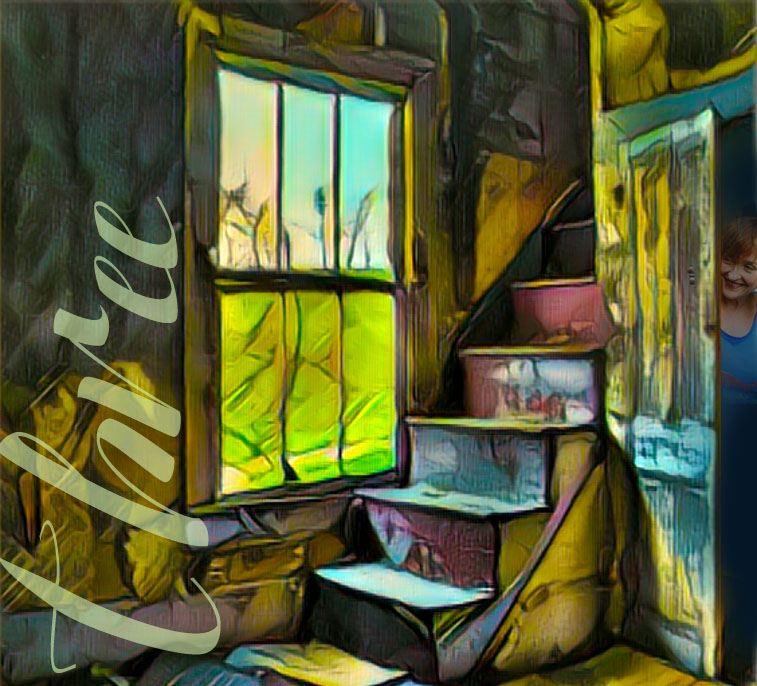 I love the number three. Dramatically speaking, it’s a miracle worker. Three is the smallest number of elements you need to create (or break) a pattern. And your audience likes patterns, almost as much as they like it when a pattern they learn is broken. Three is a destabilising number, too. Three is a provocation and a conflict all by itself. Three is born to tell stories. Count on it.
I love the number three. Dramatically speaking, it’s a miracle worker. Three is the smallest number of elements you need to create (or break) a pattern. And your audience likes patterns, almost as much as they like it when a pattern they learn is broken. Three is a destabilising number, too. Three is a provocation and a conflict all by itself. Three is born to tell stories. Count on it.
Let’s talk horror. Indulge me.
First…. a noise. coming from downstairs. what is it? ignore it. it was just my imagination. (the idea of an intruder is introduced)
Second….there’s that noise again. what is that? Better go look….careful….this is a bit scary…oh! phew, it’s only the cat. Relax. Back to bed. (the idea of an intruder is mooted but, oh look, false alarm)
third…..the noise again. Is that the cat again, the little scamp? I’ll have to go sort it out. Here, kitty, kitty. OMG! Shriek! Cat runs out of nowhere and runs in the opposite direction! I turn around and argh! there’s the Boogey man! scream!!!! run!!! Bwah-hah-hah!
We’ve all seen this horror trifecta a hundred times in a hundred different movies in a hundred different ridiculous scenarios. But we absorb it and accept it every time, too. Because it’s rising action. Because it’s dramatic. Because it’s just plain fun. —ah-hah! there’s a pattern of three right there. I recently learnt that a set of three statements like this is called a Tricolon.
Just saying.
So. Two is company, but three’s a crowd, right? Meaning that three makes things awkward or frustrating or conflicting or tense in some way? Great. That’s the stuff of drama. That’s what you want.
As a device, a third character is truly useful.
I want to talk about a character as a device for propelling a story forward. A specific device, namely that of ‘the newcomer’. You see writers use this device all the time, sometimes unwittingly. So in an effort to make the unconscious, conscious so that you can learn to master it and use it if you need it, let’s unpack the idea of the third wheel, the intruder, the new guy, that magic number 3.
Say a story begins, two characters, going about their business, whatever is they go about. The audience immediately starts looking for clues about how these two character’s world works so they can make sense of it.
Who are these two?
What do they mean to each other?
How are they related?
What is their history together?
What goes on here on a regular basis?
What’s normal?
Say one of them has only one hand. It’s significant for the story, the audience guesses this much, but neither of the two characters is talking about it.
The problem is these two characters are familiar with their shared history, their relationships and the established rules of their world, and as such will rarely refer to them overtly. Why should they? One of them has only one hand as a result of a tragic gardening incident several years ago, but because both of the characters know all about the incident in their shared history of things, they don’t mention it. The facts are already well known and understood. So much so that if you go dropping lumpy hints about relationships or events of shared history between your two characters into the writing, you could end up with that dreaded monster, the enemy of good writing, exposition, and its ugly sidekick, stilted dialogue.
Yeah, of course, it’s not a bad thing for your audience to only gather by small degrees what everyone’s relationship to each other in a scene might be, and a clever writer can manage (mostly) to ‘bury’ essential historic information in the text/dialogue. But sometimes that third character works a charm.
Enter a third character, who is not familiar with the given circumstances of the world inhabited by your first two characters. The first thing the third character does is tease out information that otherwise would be left unsaid. They know nothing about the relationships or back story. They can ask questions, getting across essential history and information in a completely normal natural way.
And more importantly, third characters are also very good at upsetting the status quo between the first two characters. Third characters have a way of changing the balance of power. They have a way of bringing new information or new attitudes that cause tension or jealousies.
Having said all this there are quite a few wonderful plays with only two characters in them and the dramatic engine in those script works just fine. David Mamet’s Oleanna springs to mind. I guess it’s just interesting to observe the mechanics of a third character on stage.
